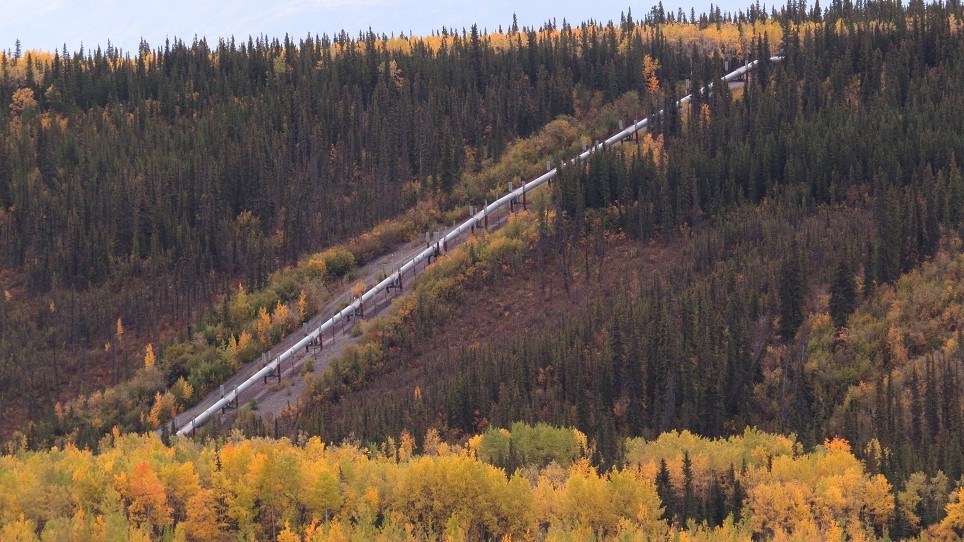The seven spills in 2015 from crude oil pipelines regulated by the BC Oil and Gas Commission included one of 1,000 litres and another that required the removal of 1,460 tonnes of soil.
The 1,000-litre spill came from a Canadian Natural Resources Ltd. pipeline near the community of Wonowon, about 90 kilometres northwest of Fort. St. John on Highway 97 in the province’s northeast. The leak was discovered on Nov. 25, 2015, while the company was deactivating an old pipeline.
The company recovered the oil that was spilled and stopped using the line, according to an incident report the company filed with the commission.
The spill near Wonowon was the second in B.C. for CNRL in 2015. On May 14, a worker for the company noticed “a strong smell of hydrocarbons” and found oil on the surface of a ditch containing three pipelines near PeeJay, about 80 kilometres north of Fort St. John.
After the workers figured out which of the three lines was leaking, the pipe was cleaned and the company decided not to reopen it. It had spilled about 200 litres of oil and contaminated water, according to the report.
A spokesperson for CNRL said in an emailed statement that the company is one of the largest oil and natural gas producers in Canada and has more than 80,000 kilometres of pipelines. “Our goal is to have zero incidents, and when rare events occur such as equipment malfunction that results in an incident, we have safety and environmental management systems in place to quickly manage these events,” she said.
Throughout North America, the company had an eight-per-cent reduction in 2015 in the frequency of leaks per 1,000 kilometres of pipeline, she said. “We take every incident seriously... and deliver continuous improvement in our safety and environmental performance.”
Growing number of incidents
The Tyee reported earlier this week that the number of oil spills in the 2,489 kilometres of crude oil pipeline regulated by the commission appeared to be increasing.
There were seven spills in 2015, the same number as in 2014, but up from four in 2013, six in 2012 and three in 2011.
“The trend does appear to be edging upwards, which is always a concern,” said NDP energy and mines critic Doug Donaldson.
He said there is always risk when moving oil and it’s the government’s job to find the balance between building the economy and protecting the environment. “There’s little confidence in the current Christy Clark government in getting that balance right,” he said.
The oil and gas commission regulates the majority of the province’s pipelines, but isn’t responsible for pipelines that cross a provincial or national border. The existing Kinder Morgan Trans Mountain Pipeline, which the company is seeking approval to twin, is not included in the figures.
The publicly released summary report from the commission did not list specific incidents or include details. A spokesperson for the commission provided incident reports filed by the companies responsible, as well as a summary of each incident.
More than 1,400 tonnes of soil removed
The second biggest spill included in the incident reports happened on May 20 on a farm in the Boundary Lake area, about 60 kilometres northeast of Fort St. John.
The description from Whitecap Resources, the company responsible, is matter of fact: “Landowner discovered product on land surface while completing routine farming operations. He notified Whitecap; Whitecap personnel began spill response procedures.”
About 500 litres of oil were released. The company fenced off the area and used a vacuum truck to gather what it could. Some 1,460 tonnes of soil were removed and taken to a landfill. The pipeline was repaired with a new liner, which the commission approved.
The company with the most spills was ISH Energy, which had three. The largest was 200 litres discovered April 11 in a remote area 400 kilometres north of Fort St. John.
ISH Energy also had a 60-litre spill near Fort Nelson discovered Feb. 24 and a five-litre spill in an area 80 kilometres east of Fort Nelson on June 9.
Finally, Plateau Pipe Line Ltd., had a release of about 10 litres in an incident 130 kilometres north of Fort St. John on Nov. 30. A worker who was cleaning the line left a valve open, which allowed “a fine mist of oil” to be sprayed out.
Oil was recovered using absorbent pads and a vacuum truck. Dry grass that was “affected” was picked and disposed of, according to the report.
Expansion opposed
A spokesperson for the commission was unavailable for an interview. He has said previously pipeline safety is continually improving and the number of incidents varies from year to year.
The 2015 summary report from the commission says it makes sure any spill is “completely cleaned up and remediated by the company” and problems fixed before the pipeline returns to operation. “An investigation takes place into every incident to help ensure it does not happen again.”
On Sept. 22 the leaders of 50 First Nations and Tribes from Canada and the northern United States announced they are committed “to working together to stop all proposed tar sands pipeline, tanker and rail projects in their respective territorial lands and waters.”
The announcement said the tar sands have already poisoned the water for First Nations in Alberta and beyond and that further expansion, including any of the five major pipelines proposed to get oil from Alberta to the continent’s coasts, would spread the damage. ![]()
Read more: Indigenous, Environment

















Tyee Commenting Guidelines
Comments that violate guidelines risk being deleted, and violations may result in a temporary or permanent user ban. Maintain the spirit of good conversation to stay in the discussion.
*Please note The Tyee is not a forum for spreading misinformation about COVID-19, denying its existence or minimizing its risk to public health.
Do:
Do not: